Who visits B.C.’s marine parks, why do they go, and what do they experience?
Categories:
Over the past three years, BC Parks established a program of ongoing design research that provides direct access to feedback from the people who use our services. We regularly share what we learn from our research sessions on this blog.
In April 2024, we conducted one-on-one research interviews with people who volunteered to take part in design research with BC Parks. In this post, we share what we learned about marine park visitors and what motivates them to get out on the water.
Our goals were to:
Dig deeply into people’s motivations, emotions, and guiding principles as they relate to marine activities
Learn how marine park visitors find places to go, and how they plan their trips
During these interviews we asked participants to tell us about their experiences at marine parks, including:
How they determine where to go and where to spend the night
How fees impact their decisions on where to overnight
How they feel about crowded marine parks
What key amenities they look for and how they use them
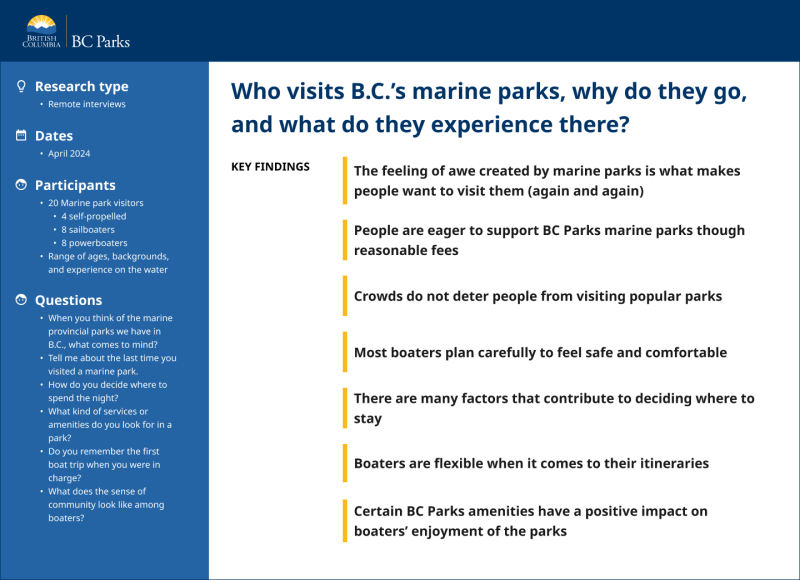
The feeling of awe created by marine parks is what makes people want to visit them (again and again)
“We are very lucky that we have these places to represent the B.C. coast. They are special and we must ensure they keep that way.” – Research participant
Research participants said that B.C. has some of the best boating waters in the world and local marine park users assume a sense of responsibility to preserve their natural beauty.
People are eager to support BC Parks marine parks through reasonable fees
“Maybe it’s time to have these things pay for themselves.” – Research participant
Most research participants said that BC Parks’ marine park fees do not impact their decision on where to spend the night or whether to use a mooring buoy or not, and that they don’t expect to use marine parks for free. Research participants also mentioned they would like to better understand how their park fees are being used.
Owning a large boat has significant recurring costs for things like upkeep, storage, and marina fees. Research participants said that the fee for a BC Parks’ mooring buoy compared to the amount of money they spend on their boat each year is insignificant. Some were also surprised at how inexpensive BC Parks’ mooring buoys are especially when compared to private marina fees.
Research participants said they prefer to pay BC Parks for a mooring buoy rather than pay for a privately owned one, so that they know the money is going to maintaining and improving the parks and their amenities. They tend to also be less trusting of private mooring buoys, worrying that they are not well maintained.
Crowds do not deter people from visiting popular parks
Most research participants acknowledge that certain marine parks can be crowded, however it does not affect the enjoyment of their stay. The following are some of the different ways people we spoke with like to enjoy marine parks.
Some people enjoy being remote and far away from others
“I don’t like the noise and disruption of powerboaters. It’s no better than frontcountry camping with the generators and RVs.” – Research participant
“There is a joy in getting out of the boat in a secluded anchorage with no one else around. There is wildlife – whales and seals. I think it must have been like this for the first explorers.” – Research participant
Some people we spoke with visit marine parks to be immersed in nature, with no one else around, and use several strategies to avoid crowds:
- They avoid weekends and holidays.
- They avoid marine parks that are known to be crowded.
- They anchor away from other boats or move to a different location if their first choice is too crowded.
- They seldom go to the group meetups with their sailing group or marina.
Some people like to build deep connections
“I’d say that backcountry [marine camping] has given me a group of friends that are family.” – Research participant
Some people we spoke with visit marine parks to connect with close friends and family. Being on the ocean gives people a sense of belonging to one another. These people enjoy travelling with reliable campers and boaters so that they can lean on each other in case of a problem.
Some people like to socialize and make new friends
“Boaters are very social and love talking about their boats. They all have opinions on how to do things. If you want to meet people, just open your engine hatch and within minutes five people will be standing there.” – Research participant
Some people we spoke with visit marine parks to socialize and party. They like to have people around and meet new people who share similar interests. Some travel in ‘flotillas’ several times a year, often organized by their marina. They invite others over for cocktails on their boat, to sing karaoke, or have BBQ potlucks on shore.
Most boaters plan carefully to feel safe and comfortable
“Don’t try to go further than you should. If you get tired, you’re going to make mistakes. You’re always using muscles to steady yourself on the boat.” – Research participant
“You have to be super aware because it is a hostile environment and things change really, really fast.” – Research participant
When planning where to go, people we spoke with make sure they have the right equipment, check the weather, and determine how long the travel will take.
- Having the right equipment in working condition enables them to stay comfortable and dry.
- Checking the weather is important to make sure they don’t get into dangerous waters or have winds working against them.
- For example, people pay extra attention to safety when crossing the Georgia Straight. It’s known to be challenging in adverse conditions and large commercial vessels can also be a hazard.
- Limiting how long the travel will take helps prevent exhaustion (mental and physical). Many people prefer to limit how long they to travel in a single day. These time limits impact where they stop over on the way to their destination.
There are many factors that contribute to deciding where to stay
“As long as I’m protected from the wind. If it does get windy it won’t be an issue, but I will sleep better [if I’m protected].” – Research participant
Boaters like to work with the tides to help them travel more quickly and easily.
- Many boaters (especially those with sailboats or larger powerboats) must consider the tides to ensure they have enough water under their boat to avoid running aground.
Boaters look for protected anchorages so that they don’t need to worry about the winds changing when they are relaxing and sleeping.
- Montague Harbour, Smugglers Cove, and Desolation Sound marine parks are popular choices for calm, protected waters.
Weather and forecast are a significant factor for smaller boats.
- Smaller boats provide less protection from heat, rain, and wind while on the water.
- If on a self-propelled boat, the direction of the current significantly impacts time and effort to destination.
Boaters are flexible when it comes to their itineraries
When boaters arrive at a park that is at capacity, they move onto plan B.
“The big wild card at the parks is, ‘is there going to be room?’. If there’s no room, we will go another 10 miles to the next place.” – Research participant
Most research participants’ strategy to ensure they secure a spot at a marine park is to get there early. They often aim to arrive just after most people set off for the day, or with enough daylight to find an alternative spot if their first choice is full.
Boaters using the campground said having a reservation would give them peace of mind that they have somewhere to spend the night. However, having to book far in advance is a deterrent. When campers arrive at a marine park without a reservation and no spots are available, which can happen often, most people are prepared with a plan B and C.
Nature can be unpredictable and affect trip plans
“Sometimes you have to make decisions on the morning of. You may have to abort or change your plans on the day.” – Research participant
Most research participants commented that changing weather can throw a wrench in even the most meticulous plan. Bad weather can greatly increase travel times or put boaters at danger. Boaters are usually prepared to adjust their route on the fly to avoid poor conditions.
Most research participants said they begin their journey with a couple of destinations in mind and decide where to go based on the wind and tides.
Certain BC Parks amenities have a positive impact on boaters’ enjoyment of the parks
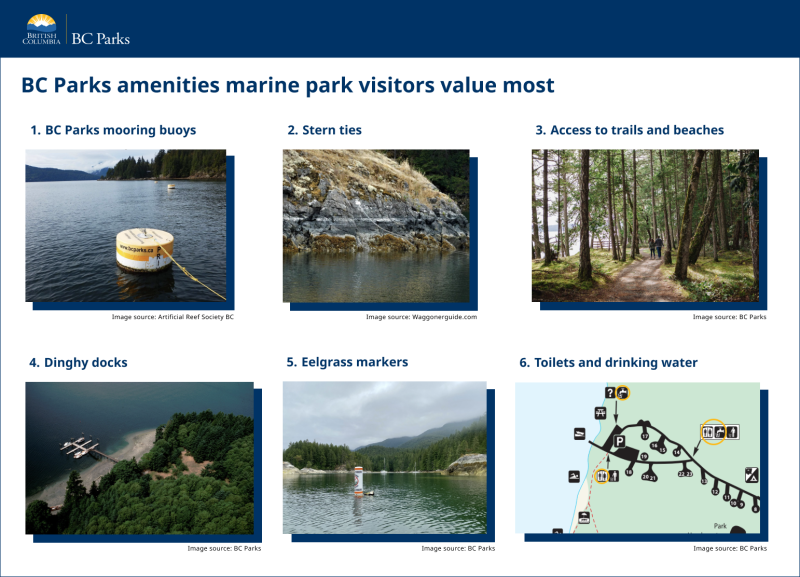
1. People find BC Parks’ mooring reliable
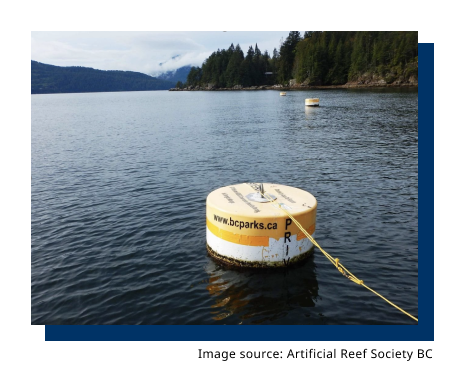
“What’s important to decide whether to anchor or moor is a good night’s sleep. With anchoring there’s a possibility of dragging if the wind picks up.” – Research participant
Research participants prefer mooring buoys over anchoring because they prevent swinging into other boats, they allow for more boats to fit in a park, and they provide peace of mind that the boat will stay in one place.
People we spoke with trust the BC Parks’ mooring buoys to be strong and well maintained.
2. Stern ties are great for densely populated areas
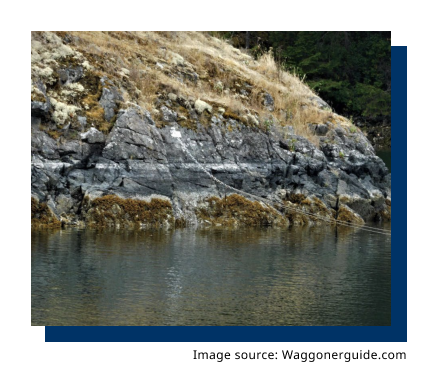
“We usually have a crew with us, and anchor all together as a flotilla. We often stern tie the back of the boat to the shore. Lots of marine parks have stern tie rims that are secure. We like to use those if we can.” – Research participant
Research participants said that stern ties are attractive to large groups of boaters who stern tie side-by-side to facilitate social activities across the back of their boats.
People we spoke with look for well-marked stern ties that run close to the waterline for easy access.
3. Boaters look for accessible trails, beaches, and outdoor spaces
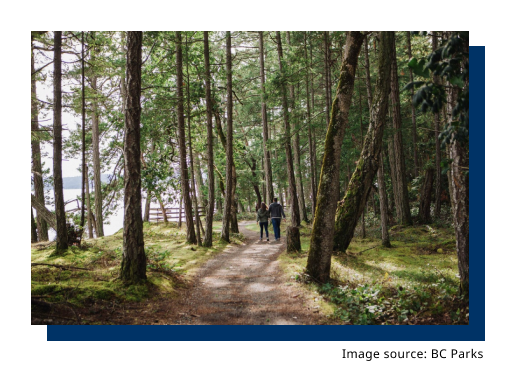
“We generally try to do a hike or a walk, depending where we are, once a day. You gotta move. We bring kayaks and a paddle board in case there is nowhere to get off the boat.” – Research participant
Research participants said that after a day spent in close quarters, they like to get off the boat and stretch their legs.
- People with children and/or dogs look for space for them to run around and play.
- People with a range of abilities enjoy using easy walking trails ashore.
Some people we spoke with arrive at marine parks in a large group and enjoy using picnic tables, shelters, and beaches to congregate and host events.
4. Docks provide better access to the shore

“It’s nice to have a dinghy dock. You don’t need to worry about the tide going out [when you’re on shore]. It’s a nice convenience to have.” – Research participant
Research participants said that dinghy docks provide an easy way for people with small boats (kayaks, dinghies, small sailboats, day boats) to access the shore.
- Some shorelines are quite rocky. Where there is no dock, people must wade through water and scramble to get ashore.
- People with dogs, children, or those who are less mobile rely on dinghy docks to access amenities on shore.
5. Some people rely on available toilets and drinking water

“For a 2-week trip to Desolation Sound in the summer with kids from school, I need to plan where I can pick up water on the way or treat it from the river because I can’t carry enough for a long trip for everyone.” – Research participant
Self-propelled and small boats have limited space which makes it challenging to pack enough water for a trip. Research participants who use kayaks said that access to drinking water has a big impact on their itinerary.
Campers who require toilet facilities on shore appreciate when they are available and well maintained.
What’s next?
We will develop visitor archetypes based on our findings in this research as well as research we are doing with other types of park visitors. Archetypes are representations of groups of visitors and may include information on visitors’ guiding principles, inner thinking, emotional reactions, behaviours, goals, and pain points. These archetypes can be a valuable tool to help our teams consider different visitor types and points of view when making decisions.
More design research posts
Interested in design research at BC Parks? Read our previous design research posts.
How can you take part in our research?
Volunteer for one-on-one research sessions
We are always looking for people who would like to take part in our design research activities. If you’re interested in one-on-one research, you can sign up using this form.
We contact people from our volunteer list at random, so we can’t promise that you will be selected for this type of research.




